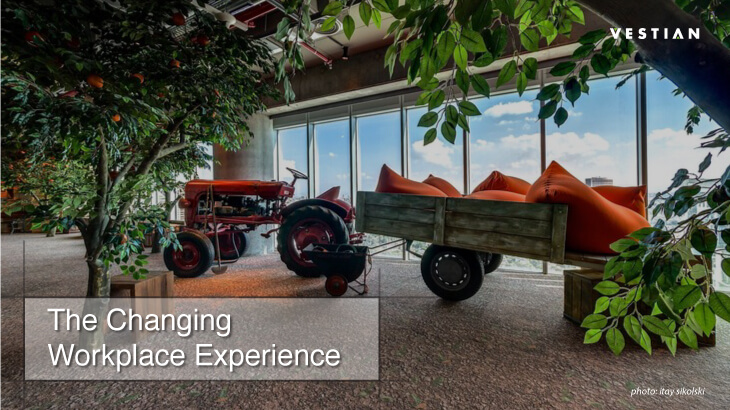Until recently, workplaces were designed to encourage employees to engage in various activities which helped progress both, individual and organizational goals. This was made possible by creating multiple flexible spaces across the office floor, ensuring that an employee isn’t confined to his/her desk through the day, and is motivated to move around within the office and collaborate for various assignments. While this worked well and continues to do so, more and more organisations are now focussing on the creation of experiential workplace design. The reason? Well, a delightful workplace experience propels employees to be emotionally invested in the organisation. This often proves to be instrumental in enhancing employee retention, and improving business results.
The Underlying Impact of COVID-19
The shift from activity-based design to the experience-based workplace has been further catalysed by the ongoing pandemic. With a hybrid workforce i.e. a mix of remote-working and office employees, there will be more focus on design and experiences, to offer employees a sense of belongingness. The need for experiential design will help decision-makers create experiences that connect with the employees in a way that is personalised, meaningful, and gratifying.
What Experiential Workplace Design Entails?
Close your eyes for a moment, and imagine walking into a hotel lobby and checking-in for an overnight stay. Right from the moment you walk into the building to locating your room and enjoying every luxury it offers, from dining to exploring the various aspects of the hotel until you leave the next day – at the end, it is the experience that offers you value for your money – not a specific product or service that the hotel provides.
In the context of a workplace too, this experience is on a subconscious level. An employee is essentially offering the best, most productive years of their life to the organisation. Experiential workplace design can be simply seen as a way of offering the greatest value for their time. This can be done by the interplay of numerous aspects including but not limited to – technology in the form of new lighting, AV, soundscaping, sensors, digital apps, natural lighting, sweeping views, textures, finishes, furnishings, and furniture coming together to create a work environment that is dynamic, living, breathing vis a vis a static one The idea is to cater to the most innate of human needs, especially those that are emotive.
Creating Experiential Design
Understanding the journey from the purview of the employee is essential. That being done, one can then move on to mapping the physical journey of the employee on a typical day, not only from the parking area to designated seating but also cross-functional movement, the to-and-fro journeys from canteens and breakrooms, and so forth. A fair understanding of the way an employee interacts with the organisation can put the architects and designers in an ideal position to imagine the employee- experience and help weave the experience in a detailed manner, and eventually bring it to life. Besides, it is important to understand that in addition to encouraging community building and socialising, experiential design helps employees feel more connected to the organisation, thereby enabling higher retention rates as well as upping the overall happiness quotient.
The present-day scenario demands a shift in the workplace as experience becomes more layered that fulfills both – functional as well as aspirational needs of the end-user, i.e. the employees. While technology is ruling the roost, it is also enabling/ delivering a more human centric approach.
Given that experience and a uniquely great experience at work is what companies are looking at, the real estate sector too will require new skills, knowledge and ideas from other spheres such as theatre, arts, hospitality, retail, behavioural sciences to make these experiences a norm rather than a one off thing.
